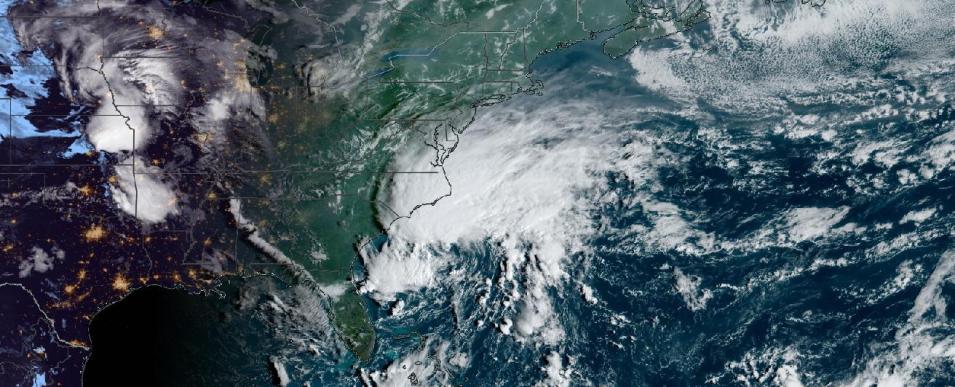GeoColor image of Potential Tropical Cyclone 16 along the U.S. East Coast acquired at 8:30 a.m., EDT [12:30 UTC] on September 22, 2023. The imagery was captured by the Advanced Baseline Imager (ABI) instrument aboard the GOES-East (GOES-16) satellite. Interactively explore Potential Tropical Cyclone 16 in NASA Worldview.
As of 8 a.m., Friday, September 22, Potential Tropical Cyclone 16 had sustained winds of 50 mph and was moving north at 14 mph, according to the National Hurricane Center. The storm is forecast to become a tropical storm during the day on September 22, at which time it will be given the name Ophelia. Tropical Storm Ophelia is forecast to make landfall in North Carolina on the morning of Saturday, September 23, and then track inland and weaken to a tropical depression as it passes east of Washington, D.C., and south of Wilmington, Delaware.
The GeoColor (PDF) image consists of true color imagery for day and multispectral blended infrared (IR) imagery for night. At night, the true color imagery gives way to IR-based blended multispectral imagery that provides differentiation between low liquid water clouds (shown in light blue) and higher ice clouds (shown in gray/white). It also includes a static city lights/nighttime lights database derived from the Visible Infrared Imaging Radiometer Suite (VIIRS) Day/Night Band, which aids in geo-referencing and can help determine the proximity of clouds (such as fog) or weather hazards (such as thunderstorms or tropical cyclones) to population centers. Please note that as these lights are static, they will not change even if, for example, a weather-induced power outage occurs.
Visit Worldview to visualize near real-time imagery from NASA's EOSDIS; find more imagery in our Worldview weekly image archive.
